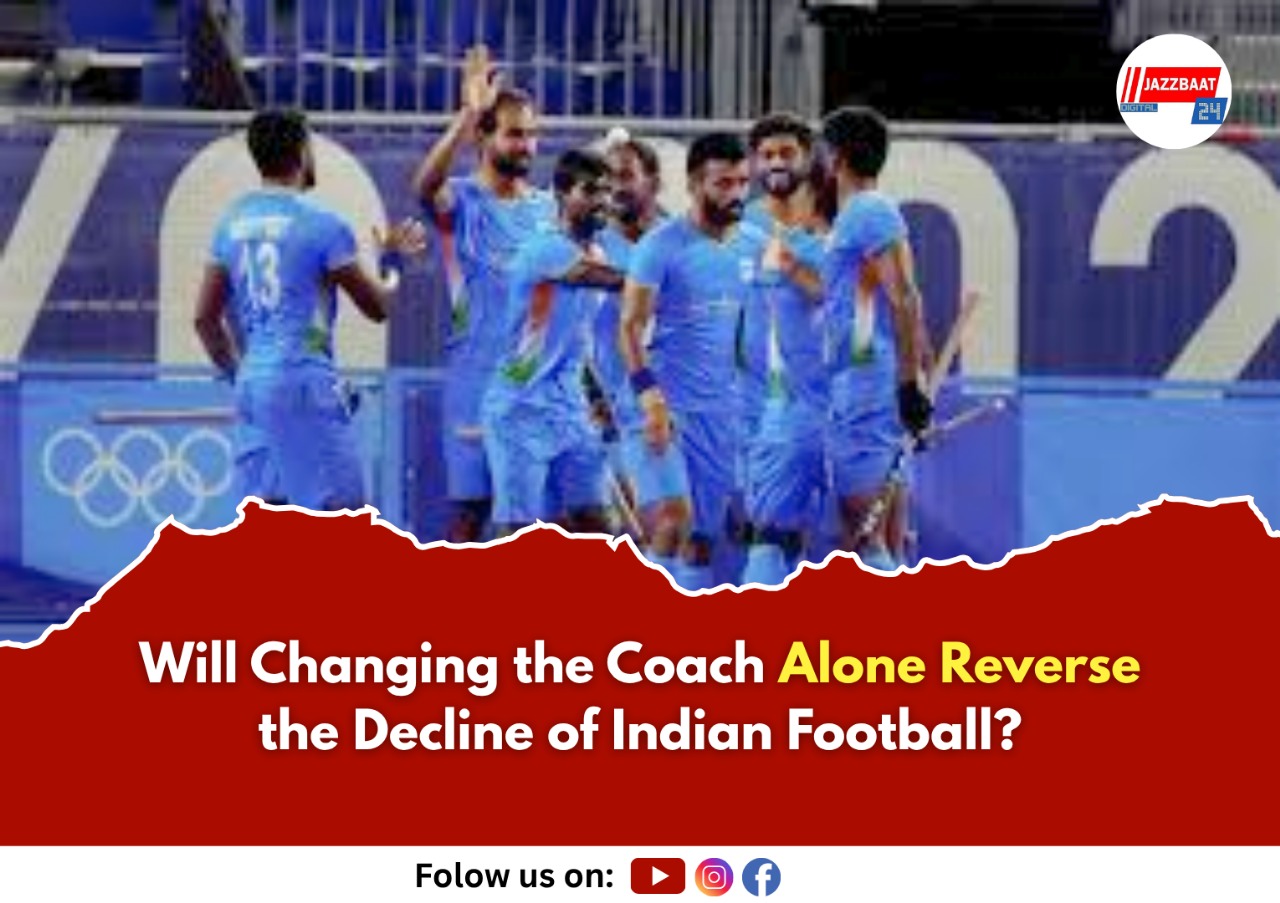
Indian football today seems trapped in a deep stagnation. There was a time when stars like Sunil Chhetri, Bhaichung Bhutia, and I.M. Vijayan gave fans hope. But in recent years, the national team has been delivering one disappointing performance after another. The recent 0-1 defeat to Hong Kong in the AFC Asian Cup qualifiers exposed the harsh reality. Losing to a team ranked 26 places below India is not just disappointing, it is embarrassing. In this context, the big question arises will simply changing the coach solve the crisis in Indian football?
Former Indian captain Bhaichung Bhutia has openly criticized the All India Football Federation (AIFF). He has demanded the resignation of President Kalyan Chaubey, asserting that the federation’s inefficiency and mismanagement are the root causes of India’s football decline. According to Bhutia, “If changing coaches could solve everything, India would have reached a completely different level in world football by now.” He believes the problem lies in structural weaknesses and years of administrative failure rather than in the coaching staff alone.
In India, changing coaches has almost become routine. Igor Štimac was removed in mid-2024, and Spanish coach Manolo Márquez was brought in. Márquez, who also manages ISL club FC Goa, has been unable to reverse the team’s fortunes. Under his leadership, India has managed to win just one match, with the rest being losses or draws. This dual role has also raised questions can a coach who is splitting his attention between club and country truly focus on the national team?
Football experts argue that the real problem lies much deeper in India’s football structure. The sport is largely concentrated in a few states and major cities, while grassroots development remains severely underfunded and unorganized. Rural and small-town areas lack proper infrastructure, and without structured talent development programs, producing world-class players is nearly impossible. Unlike Europe or South America, where children enter professional football academies at a young age, Indian players often rely on chance opportunities or personal effort.
Club owners have also started voicing their concerns. Parth Jindal of Bengaluru FC and Ravi Puskur of FC Goa have both emphasized that merely changing the coach is not a permanent solution. They argue that AIFF needs transparency, reduced political interference, and better coordination with clubs to create a functional football ecosystem.
Another persistent problem is the lack of continuity in planning. Every new coach introduces a new philosophy or style, but before any long-term plan can take shape, the coach is replaced. Players are left confused, constantly trying to adapt to new systems. Meanwhile, the country lacks a strong football culture, fan engagement is limited outside ISL seasons, and the focus on short-term success in the ISL has diverted attention from long-term national development.
All of this makes one thing very clear: India cannot revive its football fortunes by simply changing the coach. Genuine progress requires structural reform from the ground up. That means investment in grassroots talent, the creation of modern training facilities, the inclusion of football in schools, consistent state and district-level leagues, and a transparent, accountable federation.
The revival of Indian football depends not on quick fixes, but on a complete transformation of the system. Unless proper planning and structural reforms begin now, frequent coaching changes will do little, and India will continue to fall behind on the international stage.